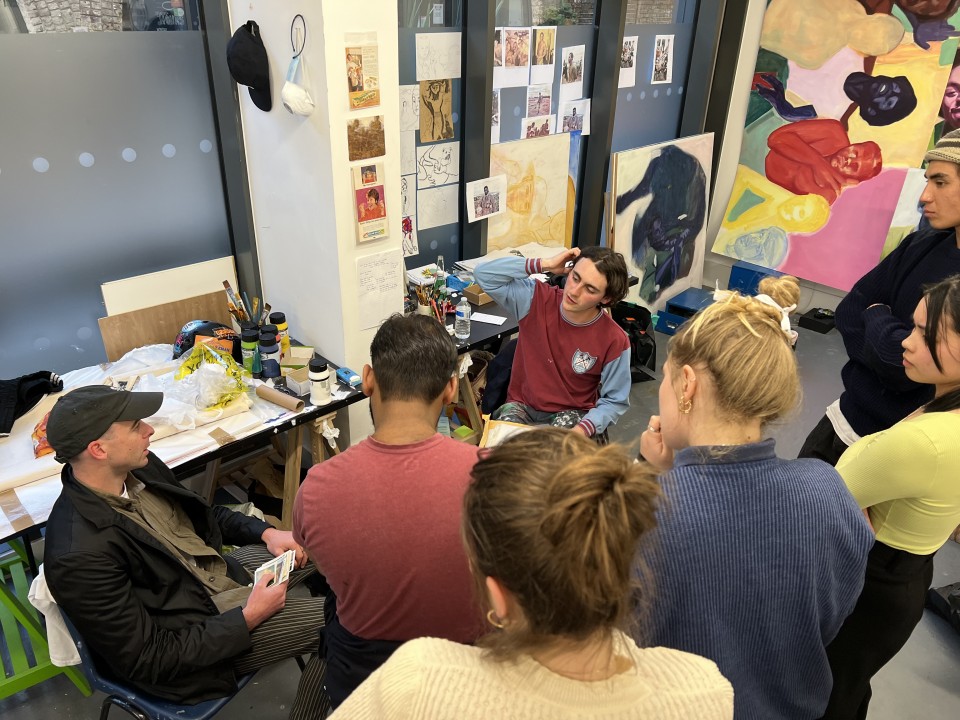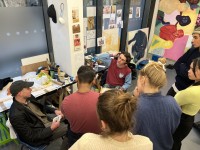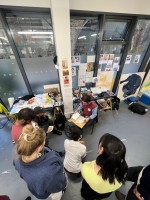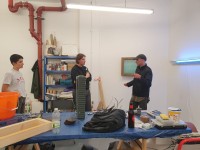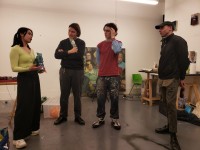As we each introduced our processes of making certain points were made in relation to each. In terms of some of these things, I had been thinking about of manufacturing and the man-made, or even perhaps loss of the knowledge or skill of making. Lythgoe posed the question “Have you ever wondered if the world was completely unspoilt and we all as present-day humans were in this unspoilt resource-rich place with all the collective knowledge that we have now, how long it would it take for us to produce an iPhone – to produce the machines, manufacturing techniques and ability to produce industrially?” I think now in hindsight another question to ask could be not how long but who has the knowledge of how to make an iPhone? It certainly left me with questions of education and even perhaps class as for me, and I’m sure for many people, who make things with their hands iPhones are so far removed from any single person’s skill or expertise. You could think of traditional working-class skilled roles such as carpentry, or metal sheet shaping or even being a cobbler or baker – all things which you would be taught the basics of at a secondary school or from one generation to the next. Where or who teaches how to make iPhones? Perhaps at a university and where indeed are they made? I think in some ways what this got me onto thinking about was how this knowledge of how to make the things we use every day has dissipated from our common knowledge and genuinely would leave most people simply guessing. Perhaps this is more of a political issue than an artistic endeavour.
Conversation of such things went on to Lythgoe’s visit to McLaren’s Formula 1 factory here in Britain. He mentioned that almost every detail of each car is in fact handmade, which was due to keep up with the demand of the design team. The design of certain parts can change each week or even daily and machines are often not quick enough to produce objects in the required rapidity of race season. Often leaving the human hand to be the fastest maker of bespoke parts. This then led us to speculate on the real difference between handmade and machine-made and what the real use of computer-aided design is within art making. Perhaps speed is not the only context in which the question is posed. Somehow, we can agree that there is a certain rigidity to the measurements and other specification in processes like 3D printing. However, the whole process is fairly closed off to external forces such as chance which many of us value especially some of the painters and sculptors of the group. So why indeed aim to produce something so rigid by hand instead of using a machine? Perhaps for Lythgoe precision is key within his works though for works like my own, the hand-made is more of interest and I’m not necessarily convinced that making something that can be so void of human touch is what I seek. Perhaps for me, a certain humanity within each work needs to be noted by the viewer.
Practically Lythgoe also gave tips about materials; particularly helpful was his help when cutting and finishing acrylic, such as using specific Festool jigsaw blades and finishing cut edges with a blowtorch so as to make them fully transparent. Stanley Buglass
